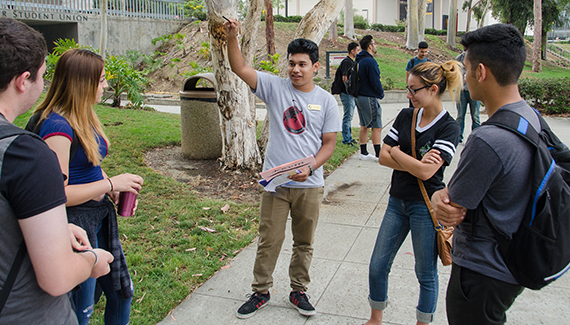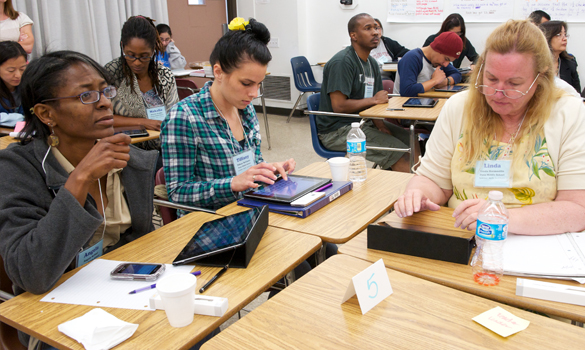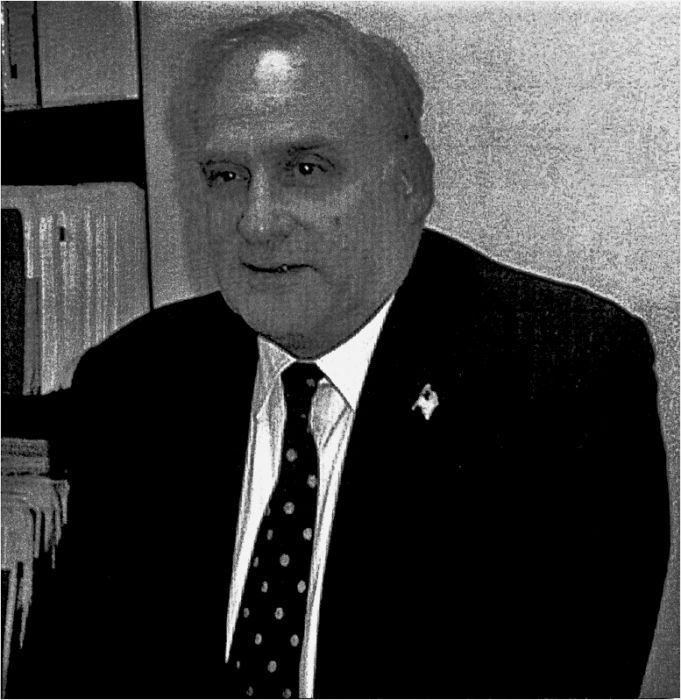Learning to tap their potential as new California State University, Dominguez Hills (CSUDH) students while developing long-lasting friendships and connections on campus, more than 1,000 incoming freshman are participating in the Summer Bridge Academy (SBA), their first step to becoming the graduating Class of 2020. For six weeks, the students participate in a variety of programs that are critical to developing a strong support system, and essential personal strengths and skills during their first year at CSUDH. The SBA's overarching goal is to strengthen the English and/or math skills of incoming freshman who require preparatory courses in those subjects based on their English ... Read More
Mathematics
Where X = iPad: Summer Institute for Algebra Teachers Integrates Tablet Technology
Twenty-one teachers from middle and high schools in the south region of the Los Angeles Unified School District were back in the classroom for three weeks this summer, but unlike during the school year, they were not in front of the class. Instead, the teachers had become students again, broadening their knowledge in mathematics through the California State University, Dominguez Hills (CSUDH) Math Project, a professional development program for K-12 algebra teachers funded by the California Subject Matter Project (CSMP). CSUDH has been a regional CSMP partner since 1986 and each summer puts on these three-week-long institutes teachers receive intensive instruction in mathematics ... Read More
Stephen A. Book (1941-2012): Mathematician, Researcher Had Impact on Student Success and Aerospace Industry
Emeritus professor of mathematics Stephen A. Book died at his home in Seal Beach, Calif. on January 10. An expert on probability and statistics, he served as a faculty member at California State University, Dominguez Hills from 1970 to 2001. "[Steve] volunteered his garage for my wife and me to use for storage during our 1972 move from Seattle to Los Angeles," says Miles, recalling how the friendship began almost immediately upon his arrival to California to take a teaching position at the university. "Soon after our arrival, we were dinner guests in his home. We mourn Steve's passing and are grateful to have the Book family as friends for what is now almost 40 years." A native ... Read More


